- Learning time
- 20 minutes
- First play time
- 30 minutes
Palm Island
Designed by: Jon Mietling
In Palm Island, one or two players (with two, there’s the option to play competitively or co-operatively) are slowly building their island up from a vacant lot into a tailor-made beautiful idyll. The USP, if that wasn’t enough? – The entire game is played with just 17 cards.
We’ll describe the solo game here, as it feels as though that was the primary aim of the designer: Palm Island is a pun as well as a palm, as you can play the entire game without even using a table. The 16 cards are shuffled and the 17th card – the round marker – placed at the bottom. Make sure before (and after!) shuffling that all the cards are oriented to their starting position. Then the game begins with you holding the deck in one hand, and the top card in the other. You now have a choice, you can play either card and by doing so, move it to the back of the deck.
The game is actually pretty simple – the cards represent workers or places on the island, and begin at a kind of basic level. Your goal is to upgrade them by rotating or flipping them over: making a quarry more productive, say, by having it produce two stones instead of one. Most cards either produce resources (stone, wood, fish) or score points (- some do both) but at a basic level, you use the produced resources to pay for the upgrades, slowly improving your deck over each round. When all cards have been moved to the back of the deck, the round card will be at the top: it gets rotated (or flipped) to denote a new round beginning and then moved to the back again.
After the eighth round ends, the game is over. You can see how well you did in a solo game by referencing the rule book, or in a competitive game by simply comparing scores with your opponent. The competitive game is slightly different, as there are two tiers and one of them involves some direct interaction. The co-operative version introduces an extra element (disasters!) that change the winning condition to one of survival.
The guru's verdict
-
Take That!
Take That!
None in solo or co-op version. A bit in the competitive 'steel' game.
-
Fidget Factor!
Fidget Factor!
None.
-
Brain Burn!
Brain Burn!
No luck here beside the order your cards come in, and that is to some degree, pliable. There's both tactical and strategic decsiions to be made, but a good memory comes in handy as well.
-
Again Again!
Again Again!
There's a lot of game here for the amount of cards - solo/competitive/two competitive iterations before we get around to mentioning some other variants in the box. But it's built around the base game, which doesn't vary a huge amount. After a few plays you may feel you've explored sufficiently that the card-order randomness doesn't bring too much freshness.



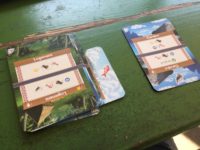

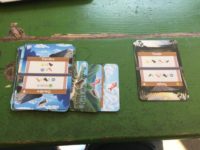




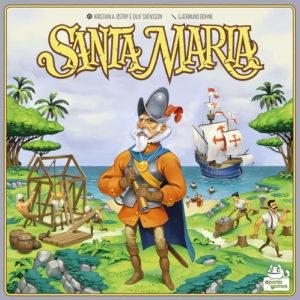
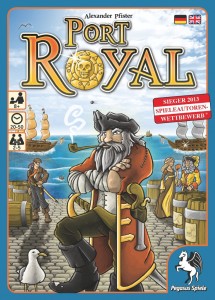
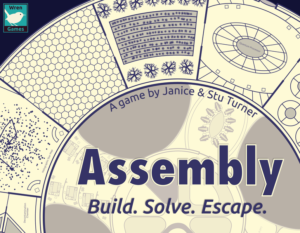
Sam says
An intriguing idea to design a game that doesn't actually need a table to be played on; but a surface is kind of handy because you're doing a lot of rotating and flipping, and if you lose the order or orientation of the cards, it's all over. So with the gimmick out of the way, what about the game? Well, it's a clever little design that packs a lot into just seventeen cards. The theme is almost so irrelevant as to be absent: I kind of lost sight of my alleged castaway status as my focus zoned in on the symbols alone, working out how to gain the best advancements. That's certainly diverting enough, but for me Palm Island suffers a little in comparison to a solo game like Friday, because it doesn't have the mounting drama (or indeed, the comedy) of Robinson Crusoe slowly going nuts, or the more tangible time-running-out of the delightful Assembly. Of course, you can't play those games without a table, but outside of that admittedly clever conceit, I'm not really convinced Palm Island has much to shout about. All of which is not to say I haven't enjoyed my several plays of Palm Island, because I have! It's just not a game that does much else for me, but if you like playing solo and appreciate the portability, it's certainly worth giving it a whirl.